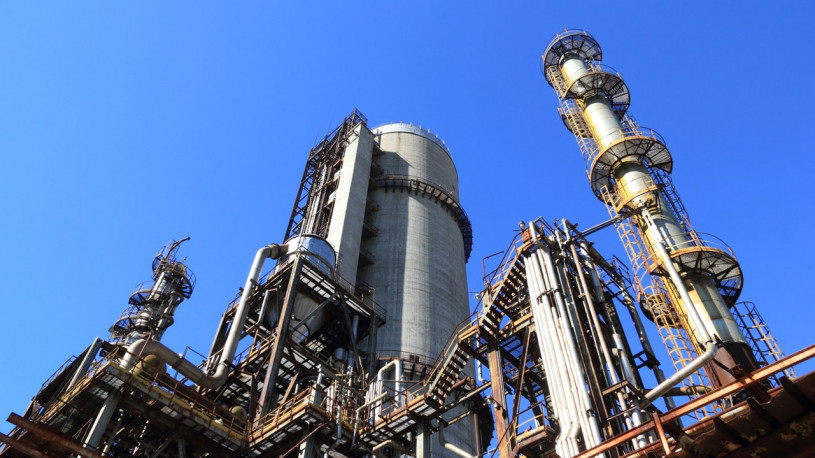-
Why Should Chemical Businesses Go Digital?
 Continue Reading
Continue ReadingThe chemical industry is highly advanced. Today’s processing plants use state of the art equipment and are computer controlled. Meanwhile, chemical supply chains are organised on computers and modern software designs new chemical compounds in an office, instead of a lab. The digital world is everywhere in the chemicals industry; except in sales. For the buying and selling of industrial chemicals is still largely done by meeting traders and manufacturers at conferences, emailing known customers and by picking up the phone.
The worry now is that this old school way of business will have a detrimental effect on the industry’s effectiveness. Indeed, many think that a lack of digital sales management will see the collapse of many chemical businesses.
For example, according to Paul Taylor, SAP expert and Forbes magazine contributor, “A digital transformation is being driven by a set of technology mega trends including mobility, hyperconnectivity, super-computing and real-time big data analytics, cloud computing and social.” And he believes that if your chemical business isn’t doing any of these things, then it could be in trouble. He even notes a study that found, “In the next 10 years it is estimated that 40% of the S&P 500 will no longer exist if they fail to keep up with these technology trends and recognize that the world has changed.”
This is a belief supported by a recent CapGemini Consulting report entitled, ‘The Digital Advantage’ which states that, “companies who have embraced the digital world and execute on their digital strategy register real gains in shareholder and stakeholder value. Typically they boost revenues by 9%, increase profitability by 26% and gain 12% in market valuation.”
This is an idea supported by Stefan Gurtzgen, senior director of chemicals at SAP and contributor at specchemonline.com, when he recommends using real-time pricing management as a competitive chemical business strategy. He writes, “Today, customers demand accurate pricing information at all times in order to make smart purchasing decisions. In the new digital economy, it is now possible to provide on-the-spot, competitive pricing for customers and prospects, including delivery commitments.”
This may go in some way to explain the meteoric growth of online trading companies, such as Alibaba and Amazon, as well as B2B online trading hubs like Spotchemi (who specialise in chemical E-networking and who host this blog page). They are embracing the changing times, and can see the strategic advantages of using modern digital business techniques to gain advantages.
Certainly millennials, the new wave of business thinkers born after 1985, think that the Internet is a better way to communicate and therefore do business. In a 2011 report by PWC, called “Millennials at Work”, it was found that the traditional ways of selling chemicals (networking, attending conferences, meeting potential customers) clashed with the way they expected to do business. It stated that, “With technology dominating every aspect of millennials’ lives, it’s perhaps not surprising that 41% say they prefer to communicate electronically at work than face to face or even over the telephone. Millennials routinely make use of their own technology at work and three-quarters believe that access to technology makes them more effective at work.”
This means that your next prospective client, feedstock supplier or chemicals purchasing manager is likely to prefer digital contact over face-to-face introductions. And if you are not sufficiently digitised and taking advantage of databases, E-networking and targeted online campaigns to promote your industrial chemical products, then you competitors are.
So what’s the next step in getting your chemical business into the 21st century? Well according to the experts at CapGemini Consulting, “The digital transformation must be led from the top.”
So who’s leading your revolution to a digitized way to chemical sales?
-
Is the Chemical Industry being Slow to Go Hi-Tech?
 Continue Reading
Continue ReadingElectronic databases, e-networking, digital commerce and online markets have all taken the commercial world by storm. Last year BusinessInsider declared that Amazon is now bigger than Walmart. Alibaba is worth more than both of them. It is clear that the business world is going digital, so why is the chemical industry so reluctant to join in?
Well according to Stefan Gurtzgen, senior director of chemicals at SAP and contributor at specchemonline.com, most chemical businesses believe that their competitive edge is in areas other than the ability to market their chemical products effectively. In fact he outlines several business models that chemical manufacturers and supplies are clinging to and explains how these models are fatally flawed.
He writes, “One differentiating strategic success model was customer proximity or having chemical processing facilities and/or technology service centres close to the customer. However, with customer bases going east, eroding customer loyalty, and increasing demand and erratic geo-politics in the digital economy, customer proximity is no longer enough to drive sustainable growth and profits.
Being close to feedstock was another strategic model, in particular for commodity producers. Here also, the advent of shale gas in the US, the oil price rollercoaster and innovative technologies turning coal into chemicals, driven by China, changed the game and diminished the advantage of feedstock proximity.
Lastly, those companies which pursued ownership of intellectual property and technology know-how as a differentiating model are being challenged, due to the rapid commoditisation of speciality products, few new blockbusters being developed and launched and low cost competitors entering the market.“
It seems that older strategic models for chemical businesses are no longer, or are at least less, relevant than before. Instead, Gurtzgen suggests that chemical firms should be embracing technology. They should use digital capabilities to improve the way that they manufacture chemicals, purchase feedstock, organise logistics and above all sell their products.
This is a fact supported by a 2014 Accenture report entitled ‘The Chemicals Industry: Getting ready for next generation B2B’, which stated that there is a, “…new chemical industry customer.” Warning that, “Within a decade, perhaps half or more of a typical company’s traditional workers—those who grew up with paper based invoices and product information— will be retired. Their younger replacements will be ‘digital natives’ for whom rich, electronic-based interactions are the norm and whose expectations of the digital experience are rising rapidly. These will be the buyers that chemical companies must reach. Chemical companies seeking to meet these expectations will be in position to stay close to their customers, which is an increasingly critical asset in a competitive industry.”
Computers are playing a larger and larger role in our lives, from how we communicate with friends, shop online, find love and do business. The chemical industry is aware of that, and is leading the way in using technology to manage chemical processing plants and digital chemistry that can simulate chemical compound development. But isn’t it missing out on an easier way to connect?
Surely the use of digital marketing, E-networking, big data and targeted online campaigns will create the competitive advantage that Gurtzgen sees has gone. No one expects a chemical company to replace Amazon in terms of online trades any time soon, but why do chemical businesses still remain unsure about using the digital world to gain a marketing advantage?
-
Will Oil’s Low Price Kill America’s Shale Gas Chemical Industry?
 Continue Reading
Continue ReadingWhilst the chemical industry is generally thought to be in good long-term health, there is much concern over how chemical prices and profitablity will be effected by the current low price of oil. When the price of a barrel of oil was closer to the $100 mark, the discovery and development of shale gas deposits in America offered the chance for many chemical businesses to make healthy profits. Their cost competitive advantage was obvious and the road to open numerous ethane and naptha processing plants was clear.
Now that the price of a barrel is so much lower, many chemical industry chiefs are concerned that the boom years in the US shale gas chemical market may be over. Will they be replaced with years of losses, plant mothballing and bankruptcy?
Here are two qualified opinions on the matter:
Al Greenwood, from ICIS Chemical Business, states in his report, “In some cases, the decline in [oil] prices has eroded some of the margins of US-made products. Naphtha prices have fallen with oil, reducing costs for foreign producers, who overwhelmingly rely on it as a feedstock. US companies rely heavily on natural gas liquids (NGLs) for feedstocks. Prices for these, however, have also declined. As a result it is believed that the US has maintained its cost advantage, even if margins have eroded.”
He does however add a cautionary word for the future, stating that, “The decline in oil prices has caused a sharp drop in oil rig count, which will lower demand for oilfield chemicals. The decline could leave some companies with high-cost inventory on their books.”
Meanwhile, Jerry Keybl, Project Leader at bcg.prospectives, believes that, “Because ethane is a by-product of natural-gas drilling, it tends to trade at its marginal disposition in the market. Since 2012, the supply of U.S. ethane has greatly exceeded the market’s ability to consume it. As a result, the price of ethane has fallen to its fuel equivalent, which is historically low per gallon and per British thermal unit (BTU).”
Despite these current low prices, he is still optimistic for the future of the American shale gas chemical industry, stating, “The development of shale resources has increased the supply of natural gas and NGLs in North America. The abundant resources will promote competitive prices for natural gas and NGLs for many years. In the medium term, through the early 2020s, historically low prices for NGLs, especially ethane, will drive market dynamics. I believe that the North American chemical industry’s feedstock advantages are sustainable, notwithstanding the recent sharp decline in crude-oil prices.”
So while chemical traders still need some caution, it seems that expert opinion leans towards the survival of the American shale gas chemical industry for the medium and long term.
If it is to continue its success, then how will other regions cope with the continued influence of American shale gas development? Can the European chemical market survive without a cheap source of energy and feedstock? Will the Middle East and Russia remain competitive with oil at such a low price? Or will other regions, such as South Africa, Canada, Argentina and China develop their own shale gas reserves and turn the chemical prices on their head once again? This, for now, remains to be seen.
